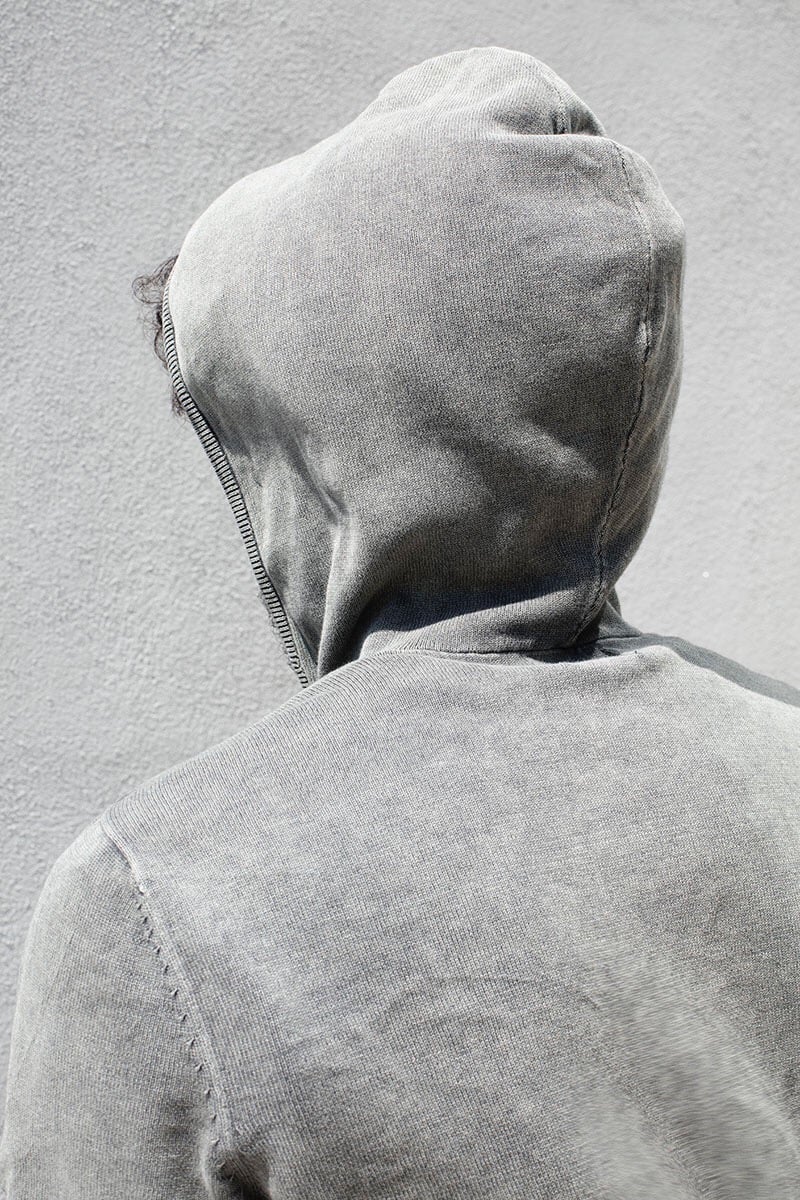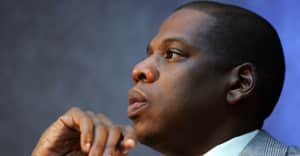This Photographer Is Challenging Racial Perceptions About Black Men
John Edmonds confronts the toxicity of racial bias in his new photo series “Hoods.”
 John Edmonds / All images courtesy the artist
John Edmonds / All images courtesy the artist
“I hope my work can reflect the reality of this country right now,” photographer John Edmonds explained. “The fact that people look at my photos and are reminded of Trayvon Martin shows that we are living in a time where people are aware of how photography and visuals reflect social justice and the Black Lives Matter movement.”
With his searing photo series “Hoods,” Edmonds aims to provide more questions than answers. In capturing a spate of faceless portraits in colored hoodies photographed from behind, the recent Yale MFA graduate is not only concerned with the representation of contemporary black masculinity and racial perceptions, but also how a simple item of clothing can, in essence, become a symbol. And not just any kind of symbol, but a symbol translated and contorted through the national gaze. Thus, by obscuring the wearer’s face and identity, Edmonds confronts prejudiced notions surrounding black identity.
For Edmonds, the personal is political. The 27-year-old photographer is part of a growing collective of artists whose work speaks to present-day social justice and political hurdles. By using highly stylized photographs of young black men like himself, “Hoods” speaks to the power of perception and the symbolism that is continually projected onto the bodies of black Americans.
Following the 2012 death of Trayvon Martin — an unarmed black teenager deemed “suspicious looking” — the hoodie became a racially coded emblem of public consumption, inspiring, among other acts of solidarity, a “Million Hoodie March” in New York. There has even been talk of the new National Museum of African American History and Culture acquiring Martin’s hoodie as part of its collection. The FADER recently spoke with Edmonds about how his photography serves as part of a larger artistic response to issues of policing, racial profiling, and black masculinity.
In this series, were you attempting to question society’s gut reaction when viewing these photographs?
There is an indication. It’s the viewers assumption that these people under the hood are black and male and young. The viewer's perception is what you project. I was thinking about all these implications of blackness and maleness. [Given the] exterminating of black men in this country, I think most people see those images and think: black and male. That says a lot about where we are today. I want the viewer to question the culture of identification that comes with clothes or the code of dress.
Hoodies have a very specific cultural context; they often signify youth and, in some cases, a kind of nonchalance. But what happens when you add the race factor?
There’s all this suggestion in the photos. The silhouette has this boy-like shape to it, it looks youthful. Implications of race, gender, and age, and trying to figure out who it is that you are looking at. What you see is who you are. It implicates your bias, your gaze. Black youth have a lot of decisions to make about how we present ourselves when going out into the world. We are all very mindful about watching our bodies. In public space especially. You’re continually being scrutinized and watched. But never really seen.


Talk about the complicated role of photography in defining black self-image.
I started photographing “Hoods” in early 2016. Most of these are my own hoods. I was at Yale and feeling a bit reclusive and distant. With me being black and male, these pictures are about me. But they’re also about a larger identification. How people identify those who look a certain way or dress a certain way. I was experiencing that at Yale, which is in many ways a white space, in contrast to the larger city of New Haven — with its significant black and Latino population — where I might have been perceived differently.
So how does that factor into the larger conversation about your work’s role in race and visual culture?
We see so much imagery all day, every day and I want to interupt the way we see. Interrupt the way we see fashion and youth imagery. I am trying to talk about my own experience. It’s very personal to me because I’m black and male. It starts with me.
I want my work to create social awareness and social change. I want people to think. My pictures are meant to be contemplated. They address topics of visibility, but it’s subtle. And subtlety can be an important tool. With political art, you often see work that it hits you over the head or oftentimes just becomes an object. My photographs are subtle and invite people to look and they become a mirror. A mirror to the individual and to the times we are living in.
Coming out of Yale and as a studio artist, do you believe the work still makes an impact when it’s strictly shown in galleries or specifically to the ‘art’ crowd?
There's political art and then there’s art that is political. It’s dangerous when the work is only seen by an ‘art’ audience or only shown for the purpose of commerce. I want my work to be seen in alternative spaces, whether it’s online or in the public spaces. It’s for the people. Not just an art audience.
You mention art in public spaces. Traditionally, you don’t see a lot of photography in large public spaces.
Right. You typically see murals or sculpture in the public. I want my images to be seen outside of the white cube. When you do see photos, it’s usually trying to sell you something — fashion or style. I want to subvert the language of advertising and billboards and bring these photos into the public space.

In your work, you speak to this paradox of invisibility and of being constantly watched as a black man in America.
It’s such a conundrum. How can you be so watched and at the same time be so invisible? People of color have all experienced this. It brings a lot of microaggressive behavior to your everyday. I want to subvert these microaggressions and I think of these photos largely as a self portrait. I am not only a young black man. I’m also a young black queer man. And being scrutinized in public space is a very real thing.
How specific is this work to what’s happening in the United States versus the rest of the world?
My work certainly mirrors what is happening in America with how we view young black males. But these are questions people are thinking about on a global scale. I made the “Hoods” work first, from a personal impulse, and then started to think about the larger political implications of the work. Now I’m starting to think about it on a global scale, with what it means to be a person of color, or the “other” in so many countries. This is especially true in places like Brazil where there’s a lot of overt racism. Violence is so prevalent in our society. What we put on our bodies and how young black males go out into the world every day is something we need to grapple with on a global scale.

